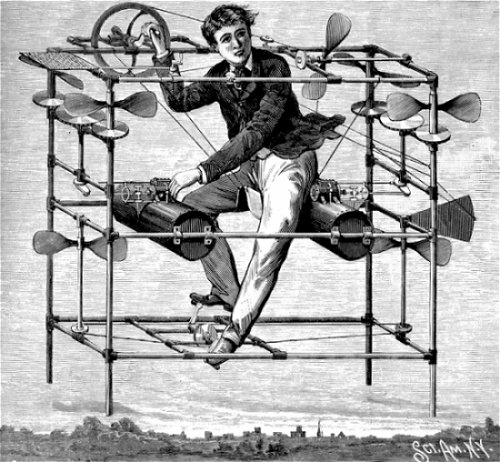Inventing Boyhood
Today, we invent boys. The University of Houston's College of Engineering presents this series about the machines that make our civilization run, and the people whose ingenuity created them.
As mid-nineteenth-century Britain and America began turning into a serious industrial powers, their populations drifted off the farm and into cities. Social theoreticians began asking what would become of young boys as they lost the rough and tumble of living next to nature. Would they lose the verve, needed to grow them into proper men?
These same concerns drove the Arts and Crafts Movement — first in Great Britain, then in America and other countries. By the late nineteenth century, we find a whole new literature of books for young people. They told us that we needed to work with our hands. We needed to stay connected with the agrarian world.
Much of this literature began focusing on boys in unexpected ways. British author George Henty poured forth historical novels about very young men taking incredible risks. A flood of how-to-do-it manuals told boys how to build their own pipe bombs, air-planes, and X-ray machines. It seemed sissified to talk about safety, so no one did.
And so two seemingly contradictory movements fed one another. One was the arts and crafts reform movement; the other, this spate of instructions telling boys to go forth and build the brave new world with their own two hands. The ideas intertwined like the tendrils of art nouveau. And art nouveau was the banner for the whole business. Its busy organic designs were woven through the books that told young boys to go out and risk their lives.
Charles Dickens was another force stirring up the anti-industrial mood of the Arts and Crafts Movement. And he fell into the same trap when he likewise proclaimed the wild-child concept of boyhood. In this startling passage from his 1853 novel Bleak House, a character says to a boy,
My young friend, it is because you know nothing that you are to us a gem and jewel. For what are you, my young friend? Are you a beast of the field? No. A bird of the air? No. A fish of the sea or river? No. You are a human boy, my young friend. A human boy. O glorious to be a human boy! And why glorious, my young friend? Because you are capable of receiving the lessons of wisdom, because you are capable of profiting by this discourse which I now deliver for your good, because you are not a stick, or a staff, or a stock, or a stone, or a post, or a pillar.
Then he adds this remarkable couplet:
O running stream of sparkling joy
To be a soaring human boy!
Dickens lays a great responsibility upon a young boy. If soaring meant a buoyant soul to Dickens, the term had mutated sixty years later when Popular Mechanics literally advised boys to build their own glider and soar off a cliff in it.
And so the call to retain and rediscover the arts and crafts led two generations of soaring boys to build the twentieth century into a vast techno-empire. In the end, it vastly hastened exactly what it had tried to oppose.
I'm John Lienhard, at the University of Houston, where we're interested in the way inventive minds work.
(Theme music)
For a more detailed development of these ideas, see: J. H. Lienhard, Inventing Modern: Growing up with X-Rays, Skyscrapers, and Tailfins, New York: Oxford University Press, August, 2003, Chapters 12 and 13.

(clipart from a nineteenth century issue of Scientific American)